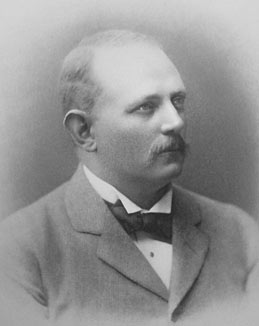Peter Henry Emerson
1856-1936
About
Peter Henry Emerson was born May 3, 1856, in LaPalma, Cuba. His father, Henry Ezekial Emerson was American, descending from the ancestral families of Ralph Waldo Emerson, Samuel F.B. Morse and William Howard Taft. His mother, Jane Harris Billing, was English. Emerson spent his early years on a sugar plantation in Cuba. He also spent some time in Wilmington, Delaware during the Civil War and in England after his father’s death. He was educated at Cranleigh, a private boy’s school, where he excelled as both a scholar and an athlete. He earned a medical degree in 1880. In 1881 he wrote his first book and married Miss Edith Amy Ainsworth. Together they had five children.

During the last years of the Victorian Era, Peter Henry Emerson was a wealthy, well-educated, aristocratic, intelligent, handsome man. He could afford the courage of his convictions and had the talent to articulate his opinions. He authored more than thirteen books and countless articles. Emerson was a naturalist, a skillful billiards player, founder of a rowing club, and was active in The Royal Meteorological Society. Emerson was the classical Victorian gentleman; he could master and excel in any field of study or sport he selected.
Emerson purchased his first camera in 1882. It was to be used as a tool on outings with his birding partner, the Ornithologist A.T. Evans. He studied photography as a science in conjunction with physics and chemistry at Cambridge University. In the same year Emerson entered and hung photographs in the annual Pall Mall exhibition held by the Photographic Society of Great Britain. He pursued photography with the same verve he approached all interests, but one must keep in mind that nature was the core of his passion. In 1886 Emerson spoke to the Camera Club of London, a group he had helped found for amateur photographers. The lecture was “Photography: A Pictorial Art.” It was a theory of art based on science. He explained that a natural photograph should echo what the human eye sees in nature. In his lecture, Emerson rated photography as an art second to painting only because photography at the time could not provide color or a true tonal relationship. The same year he published “Gathering Waterlilies,” the first photograph of nature ever produced as art from a negative, an epoch in the history of photography. It was produced as an autogravure in two limited editions. Both sold out immediately. “Gathering Waterlilies” may be the visual explanation of Emerson’s theory of art based on science. During the Victorian Era the dominant style of art was romantic, sweet, and sentimental. Both paintings and photographs could be staged productions and not concerned with truth or nature. Emerson’s pictorial photography was the antithesis of typical Victorian photography.
1886 was a very productive year for Peter Henry Emerson. He published his first album titled “Life and Landscape on the Norfolk Boards.” It consisted of 40 platinum prints of photographs exposed in the marshlands. His subjects were fishermen, reed gatherers and farmers, showing the simple beauty of their everyday lives as they integrated with nature. Emerson shared his excursions on the waterways of the Norfolk Boards with an artist friend, T.F. Goodall. Together they wrote a narrative text to compliment the photographs. Emerson published seven nature albums; “Marsh Leaves” was the last and considered his finest. Illustrated with 16 photographic etchings, it was published in 1895.
Emerson influenced the reorganization of photographic contests and exhibitions, simplifying the rules of judging, submission, and the manner of exhibiting photographs. While judging an amateur contest, he awarded the first place medal to a young German student named Alfred Stieglitz.
In 1889 Emerson published a textbook of photography titled “Naturalistic Photography for Students of the Art.” It was his attempt to explain his philosophy of art and how it related to nature including the aesthetics and techniques of straight photography, and his view of art history. The book was referred to as “the bombshell dropped at the tea party” because of the controversy it generated. It fired the focus debate: Was completely sharp faithful to nature? How soft was soft enough? Did the human eye see the subject sharp with the edges falling off to soft? What was natural, or what tones were possible? Later, in January 1891, Emerson wrote a pamphlet declaring “The Death of Naturalistic Photography.”
Regardless of the controversy, he emerged as an important figure in pictorial photography. Peter Henry Emerson’s influence is seen today in classical art expressed by the medium of photography.
Emerson continued his involvement in photography; he began writing the history of artistic photography in 1924. He completed the manuscript just before his death at Falmouth on May 12, 1936, one day before his eightieth birthday. He was inducted into the Photography Hall of Fame in 1979.
By Vi Whitmire for IPHF
